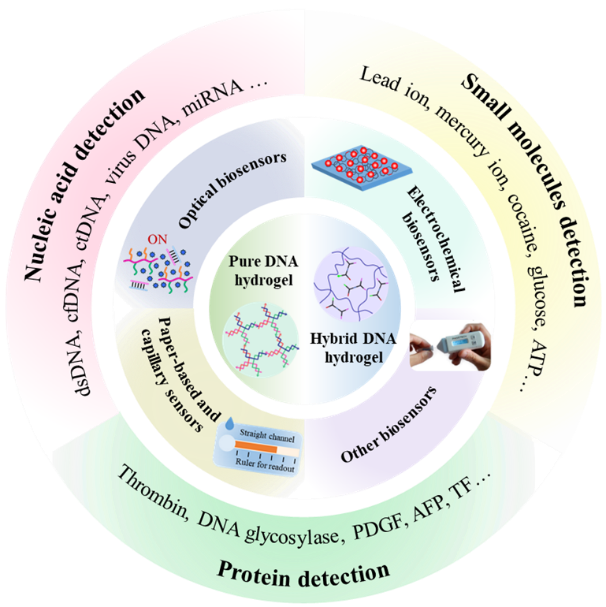Recently, the group led by MIAO Peng from Suzhou Institute of Biomedical Engineering and Technology (SIBET) was invited to write a review article entitled "Programmable DNA hydrogels construction with functional regulations for biosensing applications".
This article was published on recent issue of Trends in Analytical Chemistry.
DNA hydrogel is a hydrophilic polymer network formed by the self-assembly of DNA cross-linked polymer backbone or pure DNA modules. It has good biocompatibility, degradability, stability and mechanical properties, which has attracted widespread attention. In particular, highly sensitive biosensing methods can be developed based on programmable DNA assembly or degradation reactions.
With the development of nucleic acid amplification technology and the integrated application of nanomaterials, researchers have developed a variety of functionalized DNA hydrogels and used them for the detection and analysis of various molecules.
MIAO introduced the assembly principles and functionalization strategies of DNA hydrogels, and described their advantages such as hydrophilicity, biocompatibility, biodegradability, making them suitable substrates for biological applications.
DNA hydrogels also have tunable stimulus responsiveness and mechanical properties towards different types of biological targets, said MIAO in the review.
“DNA sequences are programmable, thus accurate capture of target and conformation change can be facilely controlled by incorporating corresponding functional sequences,” he said.
MIAO and his team also systematically summarized the signal generation mechanisms based on the phase transition of DNA hydrogels, and focused on the representative works of DNA hydrogels applied to fluorescent, colorimetric, electrochemical, and SERS biosensors.
They discussed detection strategies for different types of targets such as small molecules, ions, proteins, nucleic acids, and cells.
However, with continuous development of the biosensing field, more challenges arise, MIAO said in the reiew. In-depth understanding of the assembly and disassociation processes of DNA hydrogels can be confirmed by more advanced techniques including computer-assisted simulation algorithm. (Figure 1).
With the development of DNA nanotechnology, more in-depth studies are expected to address current problems, improve the analytical performances and expand their biosensing applications, according to the review.

Figure 1. Preparation of functionalized DNA hydrogels and biosensing applications. (Image by SIBET)
Contact
XIAO Xintong
Suzhou Institute of Biomedical Engineering and Technology, Chinese Academy of Sciences (http://www.sibet.cas.cn/)
Phone: 86-512-69588013
E-mail: xiaoxt@sibet.ac.cn